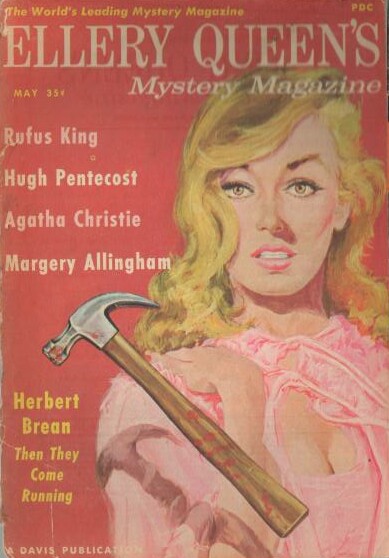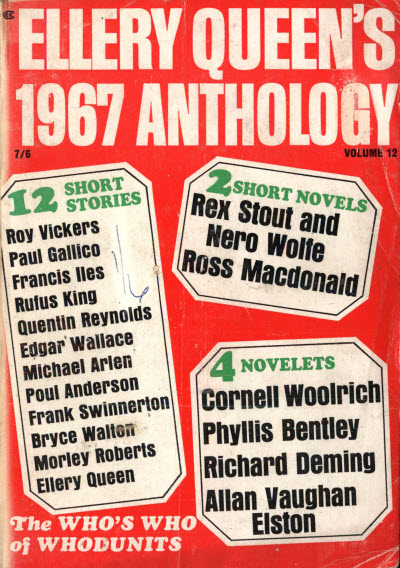by Peter Enfantino
I started off writing a "Bestest Stuff of 2011" piece this morning before realizing that a list of my favorite things of 2011 would be embarrassingly predictable to anyone who read last year's bestest list. I'm a creature of habit and I tend not to try new things (just ask my beautiful, long-suffering girlfriend) so it would be no surprise that three superhero films make my top ten movies list (Number One, for those who care, would be 13 Assassins, a film that transported me back to the first time I saw Once Upon a Time in the West) and that the best music I listened to in 2011 was not Arcade Fire or Radiohead (in fact, the only music on Rolling Stone's annual list of "The Best Albums by Groups You've Never Heard" that I'd spin on my turntable would be Adele's 21) but the deluxe edition of The Rolling Stones' Some Girls featuring the same kind of pillaging of the Stones' vaults that made Exile on Main Street my choice for best cd last year.
So, instead of one of those boring "This is what I thought was the most stimulating, please choose to agree or disagree" exercises, I thought I'd opt with the possibly-just-as-boring list of happenings in 2011 that stimulated me:
2011 Was the Year That... four superhero movies were released in one summer and only one of them sucked. You knew I had to work this in somewhere, right? It was a divine coincidence that Marvel characters would get the lavish treatment three times in a two months span at the same time we were rediscovering Marvel Comics' dawn. Thor, X-Men: First Class, and Captain America: The First Avenger all packed good acting, mature script, well-staged action sequences and, above all, a respect and almost reverence for its subject matter. Of course, it's all just a prelude to this fanboy's wet dream, The Summer of 2012, when we finally get to see how Joss Whedon intends to give ample screen time to seven Marvel characters and two super-villains and still squeeze in an interesting plot. The trailer doesn't do it for me but I'll still give Whedon the benefit of the doubt and turn up on opening day. I'm also interested to see how screwed up the reboot of Spider-Man will be with a completely CGI-ed Lizard as its villain. Then there's that 500 pound gorilla that will put all of them in the rear view mirror very quickly on July 20.
2011 Was the Year That... I finally buckled and bought a blu-ray player and HD tv. Scoleri had been gently prodding me for years (just as he had to do with the computer, the cd player, the dvd player, the itouch, the dishwasher, and every other relevant electronic device of the last twenty years--I said I was a creature of habit) but I'd been resisting. Just how much better could this be than my big screen non-HD tv and my dvd player? Gulp! What finally pushed me over was seeing The Dark Knight on blu at a buddy's house. Well, that, and the cheap prices on Amazon. Sadly, I find it near-impossible to pop in a dvd now. The $5 dvds in the bins at Wal-Mart now remind me of the $1 VHS tapes at the garage sales I once frequented. My wallet has taken a hit in the last month thanks to the afore-mentioned Amazon and their Gold Box deals. I've added blu boxsets of The Bourne and Jurassic Park Trilogys, The Alien Quadrilogy, and the Complete Dirty Harry, as well as all of Christopher Nolan's films to my collection. Anybody want to buy a bunch of dvds of those films?
2011 Was the Year That... I discovered comics files. I'd seen these things offered up on the net but had never given them a try until we decided to tackle the Marvel Universe, one issue at a time. After buying every single Essential volume (yep, I sure did) and being disappointed with the black and white reproduction, I took a chance and ordered a couple of discs from a dealer. Now, I'll never try to convince you that reading your comic books on a computer is a more rewarding experience than lovingly and carefully turning the original dusty pages themselves. No dice. I will say that it's quite a bit cheaper. Just to give you an idea, the forty or fifty B&W reprint volumes cost me upwards of $500 and files of those same comics set me back about a hundred clams (and that's not even considering what the original comics would cost you!). I also picked up several hundred files of public domain pre-code horror comics. A lot of this will translate into blogs we're working on. I doubt our Marvel University blog would be as readable without these files.
2011 Was the Year That... Stephen King remembered how to entertain his readers again. I read a Stephen King novel all the way through and enjoyed it for the first time in about twenty years (the last time was The Dark Half, if I recall correctly). I've had to replace my living room window several times thanks to King's annoying habit of drawing me in only to piss me off halfway through a novel with those fucking italics, annoying catchphrases and pop culture references (how many times, in that dopey slasher flick novella in Full Dark, No Stars, did he mention that soda pop sign?), and goofy colloquialisms like cockadoodie. King more than redeemed himself with his latest, the time travel novel 11/23/63, a rip-roaring "what if?" that puts the spin on his Johnny Smith character from The Dead Zone. What if you could go back and prevent JFK's assassination? Would it make the world a better place? It's not as easy a question as it seems, argues the author and the outcome may be a little predictable if you've read much of King's fiction but its final image of the central character dancing with his lover is haunting and will stay with me a long time.
2011 Was the Year That... HBO proved yet again that it's the place to go for the best TV programming with Game of Thrones, a thrilling fantasy series based on the novel by George R. R. Martin. Juggling several main characters, plot lines, and cliffhangers deftly, it proved that fantasy can be more than elves, unicorns and soft-focus fairies. Indeed, it's tough to view Thrones as a fantasy since there are only a few fantastical winks in its ten-hour running time to prove this isn't a dramatic piece based on historical occurrences. Beheadings, political shenanigans, and in-breeding? Sounds like modern-day Alabama to me. I was so lost in Thrones' universe that, a few days after I watched the last episode, I bought the five books that (so far) chronicle the "A Song of Ice and Fire" saga. We're talking over 5000 pages for a guy who finds it hard to find the time to read his e-mails. Bravo to George R. R. Martin (or "little Georgie," as Stan Lee would call him on the letters pages of the early Marvel Comics) for creating such a fully developed and entertaining landscape for a reader to lose himself in.
2011 Was the Year That... I spent more time listening to movie podcast than music on my iTouch. First time that's happened. I've listened to a few podcasts regularly (man, do I miss Mondo Movie!), but it's only been in the last six months that I've become near-obsessed with film discussion by fans rather than scholars. In particular, the laugh-out-loud observations by the crews of Filmjunk, 35mm Heroes, and The Gentlemen's Guide to Midnight Cinema. Junk and 35mm tend to stick to what's going on at the local cineplex but GGTMC eschews the current fare (for the most part, so do I) and opts to enlighten the uneducated (me) to the joys of Supervixens (1975) and Django the Bastard (1969), always in an entertaining and respectful fashion. All three podcasts have sent me running to Netflix, in the hopes I'll find salvation.
2011 Was the Year That... John and I met and befriended quite a few hard-working individuals. Make no bones about it, Jack Seabrook, Jim Barwise, Matthew Bradley, and Tom McMillion work long hours to help us produce Marvel University and all they get out of it is a sense of satisfaction (I hope) and a plea for "More, more, more!" A huge thank you to these gentlemen for making our part-time hobby that much more enjoyable. Just wait 'til you see what we've got planned for 2012! Speaking of which...
2012 Will Be the Year That... I'll finally get to hear new music from Van Halen (after an absence of 28 years!), Aerosmith (11 years) and The Rolling Stones (well, we hope so, anyways). We'll thrill to (or groan at) the long-awaited final film in the Christopher Nolan/Batman trilogy. Pre-code horror comics will continue to be reprinted and re-assessed between hardcovers. The producers of Game of Thrones will have the unenviable task of adapting an 1100 page second volume that's long on character and a long time between action bits (and I loved it all the same). We'll be providing lots of entertainment here at our series of blogs. You already know about the Kolchak: The Night Stalker dissection we'll be undertaking for the next four weeks but let me give you a sneak preview of some other goodies we have planned: Jack Seabrook and I will be unveiling "Batman in the 1970s," a MU-style travel through Batman and Detective Comics from January 1970 through December 1979 that'll run from January 15th on through the end of 2012. Sometime in '12, bare*bones will be home to multi-part looks at DC's mystery and war comics. MU will continue to count down to December 1969 (and its authors' smiles will grow when Gi-Ant Man and The Torch lose their regular series slots). Then there's the matter of the follow-up to Kolchak, which will be...
Nope, some stuff has to remain a surprise!
Happy New Year!

























